A specific kind of clarified butter primarily used in the Middle East and India, ghee is a form of butter that has undergone the process of simmering and skimming so as to isolate the particular fat compounds present within said butter.
Ghee’s particular texture and flavor may depend on a variety of factors such as the milk source of the butter, the process of simmering and skimming it may undergo as well as the level of heat at which it is processed.
All these factors may add up to ghee being a particularly hard food product to substitute owing to its variable nature. However, certain characteristics of ghee are shared between its individual batches or kinds, and as such may be substituted, depending on the particular purpose of said ghee substitute.
The most common dairy-free ghee substitutes are sesame oil, rapeseed oil, olive oil. The most common cooking substitutes for ghee are sunflower oil, coconut oil, and clarified butter. Ghee substitutes for baking include regular butter, vegetable oil, and soybean oil.
Why Should Ghee be Replaced?
While ghee is simply a form of clarified butter that has had its milk solids browned prior to removal, there are several reasons why an individual may choose to substitute it out in lieu of a different form of oil or fat.
Health restrictions such as high blood pressure, lactose intolerance or various digestive conditions are all an excellent reason why ghee should not be consumed, as its significant levels of lactose and other forms of saturated fat may impact individuals with these health conditions.

Ethically speaking, ghee is a form of butter, of which is primarily sourced from dairy cows, a practice that certain individuals may wish to avoid supporting, such as those who prescribe to the vegetarian or vegan dietary beliefs.
As such, replacing ghee with a suitable dairy-free or cruelty-free substitute should be no problem in most cases.
Even in instances wherein the individual or chef simply wishes to experiment with easier to attain or less costly substitutes to ghee in their dishes, a variety of potential replacements may be used.
Depending on the type of dish and its method of cooking, such as using high smoke-point oils for deep frying or similar dairy products for the purposes of baking, any nearby grocery store or pantry should present a plethora of options.
Dairy-Free Ghee Substitutes
Requiring a dairy free ghee substitute is quite common for a variety of home chefs or restaurant cooks, with a variety of reasons such as dietary restrictions and individual preference acting as the primary motivator behind the need for such a substitute.
Fortunately, quite a few ghee substitutes are considered not only dairy free but also plant sourced, making them both healthier and more ethically sourced than certain other types of oils or butters.
Sesame Oil
Derived from its namesake sesame seeds, sesame oil is often used in a variety of different cuisines as either a seasoning oil or to facilitate the act of cooking, as sesame oil presents a noticeably nutty and slightly sweet flavor, not unlike that of traditionally produced ghee butter.
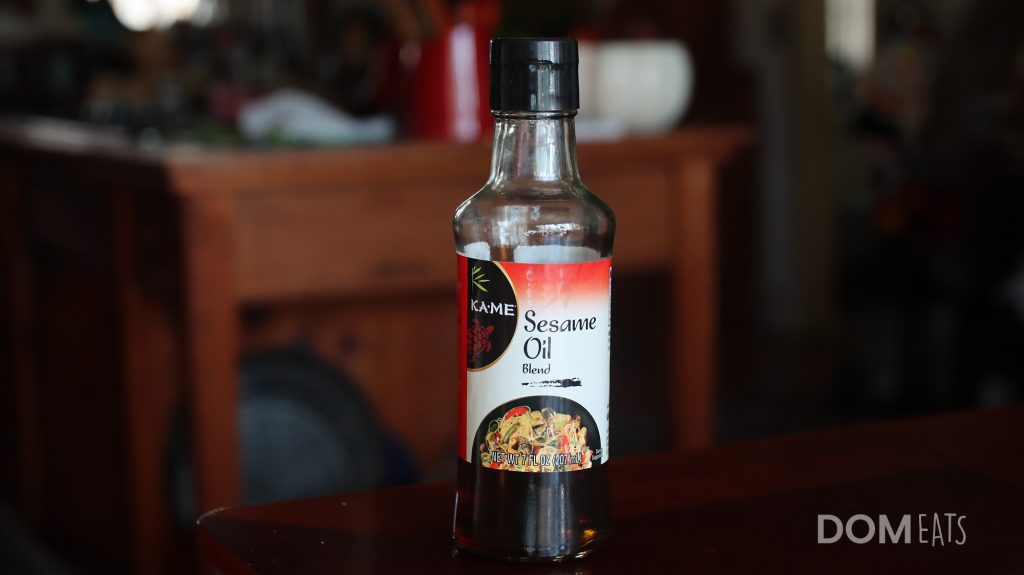
The downside to using sesame oil for certain purposes is the cost at which it is produced, with ghee being significantly less expensive to make in large volumes in comparison to sesame oil, making it unsuitable for purposes such as deep frying or basting large amounts of baked goods.
Rapeseed Oil
Among one of the historically oldest forms of vegetable oil, rapeseed oil is otherwise known as canola oil and is primarily produced from the pressing and crushing of canola seeds.
Easier to produce in volume than ghee and significantly cheaper as well, rapeseed oil is an excellent substitute for ghee in situations that require a neutral flavored oil that will not interfere with any flavors present within the dish.
This may make rapeseed oil unsuitable for certain middle eastern or Indian dishes that rely on ghee’s rich flavor to bolster its taste profile.
Olive Oil
Perhaps one of the most commonly used oils in the same types of cuisine as ghee, olive oil is an extremely popular plant-based liquid fat primarily used for salads or incorporated into various dressings and sauces.
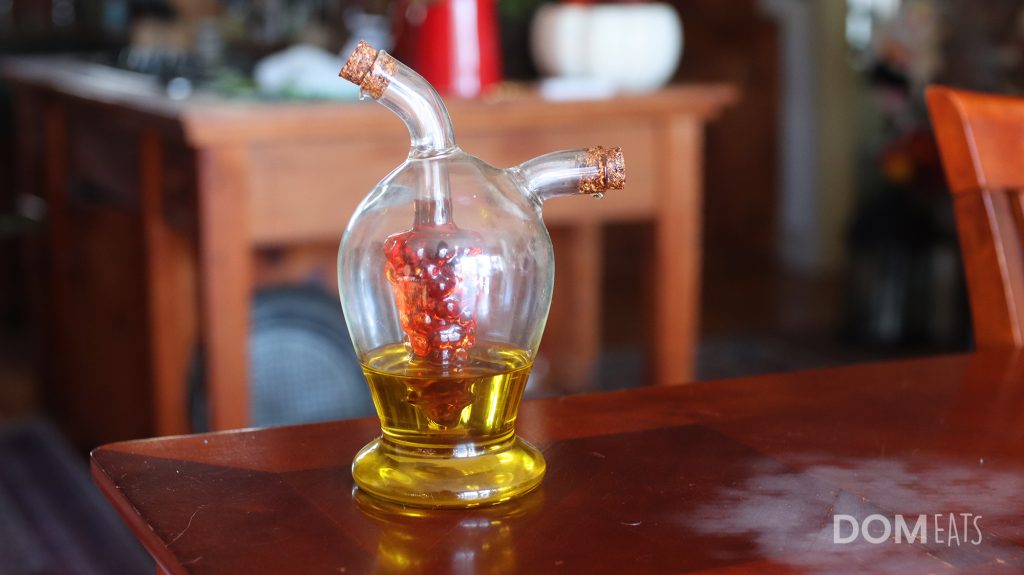
Depending on its exact purity, olive oil may present a similar but not quite the same nutty flavor, of which may facilitate the flavor profile of a Middle Eastern or Indian dish, with its mildly earthy and holistic flavor replicating many of the finer notes of ghee itself.
Additionally, olive oil is found to be significantly healthy, perhaps even more so than ghee itself owing to the particular type of lipid compounds present within olive oil, making it both more ethical and healthier to use than the clarified Indian butter.
Ghee Substitutes for Cooking
Apart from being used as a flavoring ingredient and to add a certain level of fattiness to dishes such as biryani rice, ghee may also be used in order to fry or otherwise cook a variety of traditional Indian and Middle Eastern dishes, such as the toasting of roti or as a basting agent for the halva Indian confection.
Fortunately, lipid or fatty substitutes for ghee are plentiful and easy to find in any local grocery store around the world. Depending on the particular form of cooking to be performed and the dish being made, certain types of oils or butters may be used as potential substitutes, eliminating the need for using ghee itself.
Sunflower Oil
Best used for the purposes of frying or simmering, sunflower oil has a significantly high smoking point and a nutty flavor that most forms of food tend to retain as they are cooked in said oil, characteristics sunflower oil shares with ghee quite well.
Additionally, sunflower oil may also be used in its raw form through a manner quite similar to how refined olive oil is used wherein the oil is directly added to the salad or sauce in order to improve its texture, viscosity or flavor.
This makes sunflower a suitable replacement for ghee in dishes such as meals incorporating the Indian dahi ingredient, or as a topping in foods like dosa, that are often topped with some sort of fatty spread or liquid.
Coconut Oil
Somewhat more expensive in the Western hemisphere than other ghee substitutes on this list, coconut oil presents much of the same textural underpinnings as ghee when added to a dish, especially in its clarified or otherwise refined form.
In terms of flavor, foods cooked with this mostly neutral flavored oil may take on a slightly sweet and nutty aftertaste as it absorbs small amounts of the coconut’s own flavors, somewhat similar to the main body of taste that ghee adds to a dish.
With a sufficiently high smoke point and an ease of use, coconut oil is only unsuitable as a ghee substitute in instances wherein the food is brought to slightly below room temperature, wherein the coconut oil may freeze solid owing to its relatively high solidifying temperature.
Clarified Butter
While ghee itself is technically just a form of clarified butter, there are a few minute differences that set the two apart, such as the fact that clarified butter retains a large volume of its butterfat, giving it a more liquid and oily texture.
Additionally, clarified butter is said to be less flavorful than ghee itself owing to the fact that it has not been browned or heated in the way that ghee has, giving it a more subtle and neutral flavor, which may be useful in situations wherein the meal’s consumers do not enjoy the taste of ghee itself.
Ghee Substitutes for Baking
One among the many uses of ghee is that of baking, wherein the high fat content of ghee may be used to retain moisture in a baked good, or it may be used as an insulating layer against direct heat, or even simply incorporated into a dish in order to add a distinctly sweet and slightly nutty flavor to its taste profile.
While ghee is difficult to replicate in flavor owing to its unique and specific taste notes, its various functions and uses in the field of baking may be substituted by other fatty liquids or emulsions that act in much the same way during the process of baking.
Ordinary Butter
Practically the base for which ghee is produced from, butter in its most ordinary form is among one of the most common ingredients used in baking, especially pertaining to the sort of functions ghee itself normally possesses.
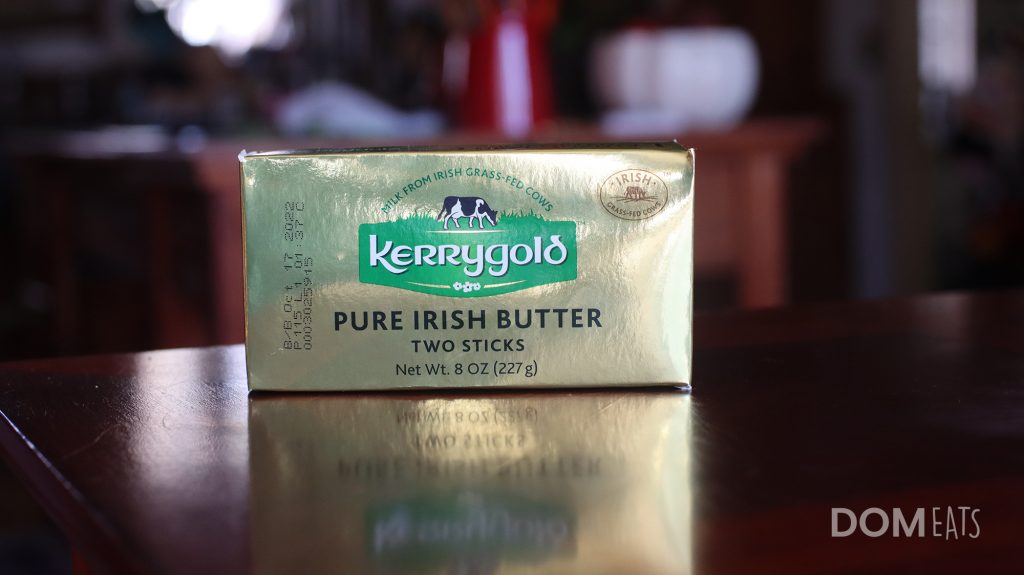
The primary difference between using butter and ghee is the significantly higher volume of milk solids present in butter, of which will produce a more dairy-like taste and may provide a richer experience in baked goods, though it will lack the distinct nutty yet sweet flavor that ghee normally has.
This equates to butter being a better substitute for ghee than other oils and fats in instances that require some sort of flavor-enhancing ingredient or surface insulator against direct heat, such as in pretzels or pie crusts.
Vegetable Oil
Generally a blanket term, vegetable oil in most commercial forms is simply a mix of multiple seed extracts and other lipid decoctions primarily sourced from vegetables and fruit plants.
The particular admixture or constituent ingredient list of vegetable oil can be highly variable between brands, country of origin, or even individual batches, as vegetable oil is generally used in cooking as a catch-all culinary purpose lipid mixture.
In terms of baking, vegetable oil in most of its forms can replace ghee as a shortening agent in pastries and crusts, as an insulator against direct heat in order to protect against burning, as a lipid addition in order to improve moisture in a particular recipe or even to bolster the caloric volume of said recipe.
However, owing to its unpredictable and somewhat unusual mixture of differing plant oils, vegetable oil may be unsuitable as a flavoring replacement in baking, as it can present any sort of flavor from completely tasteless and neutral to somewhat sour, depending on the particular ratio of oils in its mixture.
Soybean Oil
Sourced from its namesake, soybean oil is among one of the most widely consumed oils in the culinary arts, wherein it may be utilized for such things as deep frying, as a direct ingredient in sauces and dressings, and even as a nutritional additive due to its caloric density.
In terms of baking, soybean oil presents a significantly high smoking point at nearly double that of butter itself as well as significantly higher levels of total fat per gram, making it excellent as both an insulator in breads and pastries as well as a source of moisture in cakes and muffins.
This may allow soybean oil to act as a ghee substitute in all forms except flavoring, as soybean oil is said to be quite neutral in terms of taste, and may be unnoticeable for most palettes, making it a useless substitute if the primary use for ghee in the recipe is its taste.
References
1. Sahni, Julie (1998). Julie Sahni’s Introduction to Indian Cooking, p. 217 under “usli ghee.” Berkeley: Ten Speed Press. ISBN 0-89815-976-8
2. Weiss, Theodore. Food Oils and Their Uses. Ellis Horwood series in food science and technology Avi Pub. Co, 1970. 2nd Ed.
3. N.C. Ganguli, M.K. Jain, Ghee: Its Chemistry, Processing and Technology, Journal of Dairy Science, Volume 56, Issue 1, 1973, Pages 19-25, ISSN 0022-0302, https://doi.org/10.3168/jds.S0022-0302(73)85109-4.
4. Kumar, Anil & Naik, Satya. (2018). Ghee : Its Properties, Importance and Health Benefits. Shoolini University/ Indian Institute of Technology Delhi

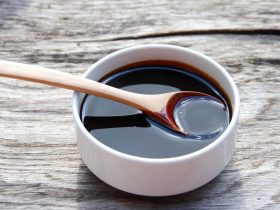
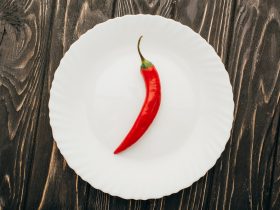
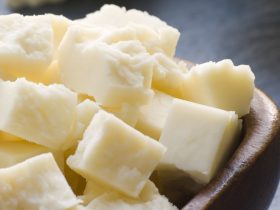
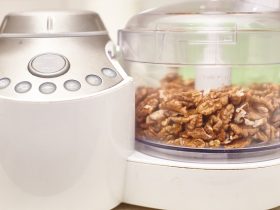
Hi, I'm Dom
Dom Eats was started to help other people fall in love with food. While cooking can feel intimidating, it doesn't have to be.